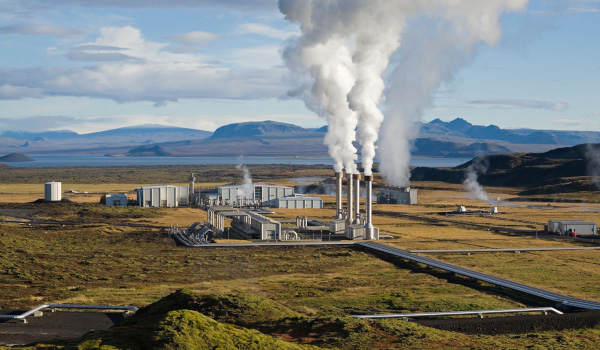Less is more: fertilizer and the price of progress
Canadian grain farmers should be able to significantly reduce greenhouse gas emissions from fertilizer applications, using available tools and technology without jeopardizing food security, according to a new industry study.
However, reaching the federal government’s voluntary target of a 30 percent reduction in total emissions by 2030 is “not realistically achievable without imposing significant costs on Canada’s crop producers and potentially damaging the financial health of Canada’s crop production sector,” say authors Rob Gamble, principal of Agri-Metrics Consulting in Guelph, Ont. and Dr. Dan Heaney, PhD., a professional agronomist and soil scientist in Alberta.
According to Karen Proud, president and CEO of Fertilizer Canada, a study co-sponsor, the study concludes that a 14 percent reduction in GHG emissions could realistically be achieved with the adoption of best management practices (BMP) in the fertilizer industry’s 4R (right source, right rate, right time and right place) Nutrient Stewardship program. More specifically, with an increased yield, that would be a cumulative reduction of 10.4 MtCO2e [metric tons of carbon dioxide equivalent] by 2030.
“But you can’t just look at emissions on their own,” she says. “You have to look at the impact on productivity and the impact on food security and meeting Canada's responsibilities globally. We all know we have to address climate change ... and address emissions. With our study, we’ve really done that policy work to see what can be achieved reasonably between now and 2030.”
Chris Davison, vice-president of stakeholder and industry relations for the Canola Council of Canada (CCC), another study co-sponsor, insists Canadian farmers already have a tremendous spirit of continuous improvement. He adds that canola growers are already extremely efficient in terms of the management and use of their inputs.
“What’s really important now is what’s the appropriate balance and emphasis [between emissions reduction and increasing production] at a time when productivity and food security considerations are paramount and are only going to . . . increase in importance in the next 12 to 24 months.”
Engaging industry and government
Davison hopes the study spurs the next level of engagement between government and industry. “But we need to have the right level of engagement,” he adds, “so that there’s a better understanding of what can be achieved and the roadmap in terms of how we can get there.”
A federal engagement process, involving provinces, territories, Indigenous peoples, producers, stakeholders and the public, concluded at the end of August. Proud indicates that the government so far has said only that it will issue an “as was heard” report.
In late 2020, the federal government announced a national target to reduce absolute levels of GHG emissions from fertilizer application to 30 percent below 2020 levels by 2030. However, there were few details that accompanied this proposal. A recent discussion paper stated that given the essential role of nitrogen fertilizer in Canadian agriculture, actions to achieve emissions reductions will focus on improving nitrogen management and optimizing fertilizer use, and “not on a mandatory reduction in the use of fertilizers.” It also describes its voluntary target as “ambitious but achievable.”
The new industry study estimated that based on the 2022 National Inventory Report, the reduction target for on-farm nitrous oxide emissions from synthetic nitrogen is 8.3 MtCO2e per year, a reduction of 3.5 MtCO2e per year from 11.8 MtCO2e in the 2020 baseline year. Davison, though, says it remains unclear to many people how the target was established and what assumptions it was based on. He adds there are issues with measurement, and “it’s very hard to manage what you can’t measure.”
Risks of reduction
Globally, government proposals to reduce fertilizer emissions have triggered protests and even brought down a government. European farmers demonstrated after the European Union announced plans for an absolute emissions reduction target that it aims to achieve through a 20 percent reduction of fertilizer use compared to 2020. The EU is expected to present an Integrated Nutrient Management Action Plan in 2022 to outline measures to achieve the goal. In Sri Lanka, a sudden total ban on chemical fertilizers in 2001 triggered food shortages and a political crisis that unseated the leaders responsible for this initiative.
The Canadian study models all the farming hectares in the major provinces that contribute to the emissions — Ontario, Quebec and the Prairies. A significant finding in the study is that because there is so much variability across crops and soil types, there is no “one-size-fits-all approach” when it comes to emissions reduction efforts.
“So one of the key takeaways . . . has to be the importance of flexibility and support to use those management practices and techniques that are best suited to individual farm operations,” says Davison.
The 4R program, the route to reducing emissions, was designed to provide farmers with BMPs to help increase yields and productivity along with farm profits, while reducing emissions. “And that's the really key balance,” says Proud.
She adds that BMPs “don’t come cheap”. Based on annual surveys, Fertilizer Canada has found that while adoption of 4R practices has been increasing over the past decade, moving farmers to the more advanced measures requires investment. Adoption, for example, could involve more sophisticated soil testing, and in some cases, require the purchase of different equipment.
Offering incentives
According to Davison, the 4R program is significant to canola production, and strongly embraced by the CCC as a means of enhancing on-farm productivity and profitability, while contributing to a reduced environmental footprint. The program also is part of the council’s strategic plan, whose goal is to increase the use of 4N nutrient stewardship practices from about half of Canada’s canola hectares to 90 percent.
The council recently launched its Canola 4R Advantage program that offers incentives to help growers initiate or advance their 4R nutrient stewardship on canola hectares with the support of the federal government’s On-farm Climate Action Fund. The initiative supports BMPs that are focused explicitly on nitrogen management, including soil testing, enhanced efficiency fertilizers, preferred application, and field zone mapping.
“We see that as an important opportunity both to improve fertilizer efficiency, which is good for both farm productivity and for the environment,” says Davison. “What we're trying to do is to help de-risk some of that work.”
The CCC wants to use the program to further demonstrate best practices and to help farmers understand both what it takes to do it and whether it delivers, along with the potential return on investment for adopting these practices. For canola growers, there is a financial incentive of up to 85 percent of eligible costs for eligible BMPs, to a maximum of $12,000 per farm operation. To qualify, new adoptions must take place on hectares without previous BMPs.
Proud maintains that the federal government also needs to collaborate with the provinces, farm groups, and the fertilizer industry, to look at the barriers to adoption of those BMPs and how they can be addressed. And while the industry sees a need to discuss the idea of incentive programs, “that conversation to date has been missing,” she said.
She does see more money coming into the On Farm Climate Action Fund. Funding need not be direct payments to farmers, but could perhaps involve investment in additional research to demonstrate how these practices pay off, or investment in education, getting farmers to work with certified crop advisors.
“If there's agreement that this is really a very positive path forward, than we need to look at how that fund might help to support farmers,” she concludes.
Next steps
Davison predicts that with its spirit of efficiency, productivity and continuous improvement, the industry would continue to make “very, very good progress” in achieving emissions reductions. And while Ottawa has said it remains open to looking at what can be done with current technologies and practices, he insists that more will be required, in terms of ongoing innovation to support further efforts beyond 2030.
If they hope to make progress in further emissions reductions, governments, farm groups and the fertilizer industry need to sit down together to chart a path forward, says Proud.
“Ultimately, it's the farmers who have to implement these things and we need to start working with the farm groups. But we're not going to hit the 14 percent either, if we don't start sitting down and figuring out exactly how we're going to do it and giving farmers the necessary tools now. We have a path forward; let’s see how far we can take it.”
R$
| Organizations: | |
| People: | |
| Topics: |
Events For Leaders in
Science, Tech, Innovation, and Policy
Discuss and learn from those in the know at our virtual and in-person events.
See Upcoming Events
You have 0 free articles remaining.
Don't miss out - start your free trial today.
Start your FREE trial Already a member? Log in
By using this website, you agree to our use of cookies. We use cookies to provide you with a great experience and to help our website run effectively in accordance with our Privacy Policy and Terms of Service.





